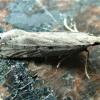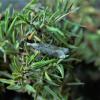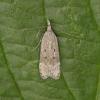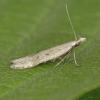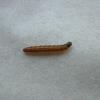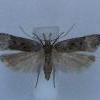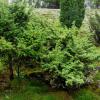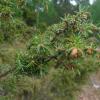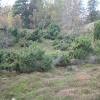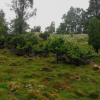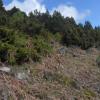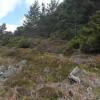35.021 Dichomeris juniperella (Linnaeus, 1761)
Status and Distribution
Scarce, occuring very locally in the central Highlands of Scotland.
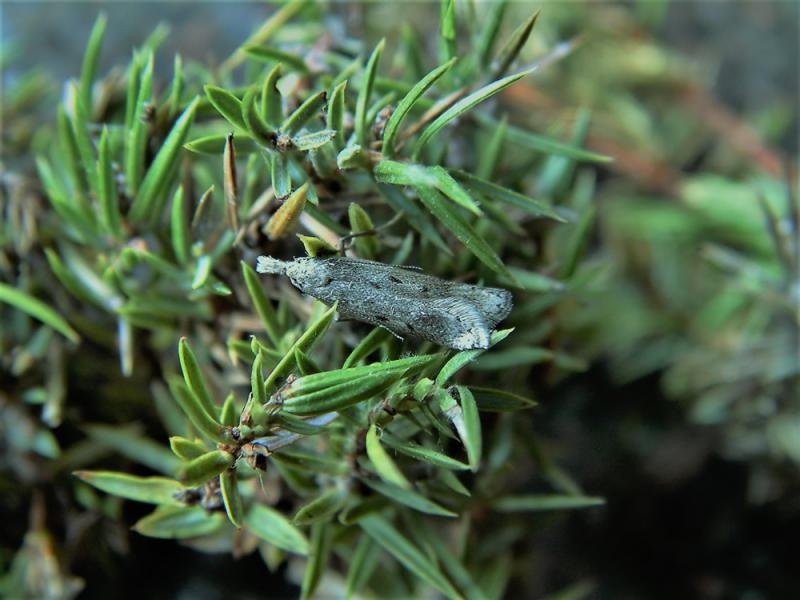
Provisional map
Habitat
Finding the Moth
Larva: in a silken spinning amongst the needles. The species has a mixed development strategy with larvae being fully fed by early September (occasionally pupating by then). Alternatively the species will overwinter as an egg or small larva (currently not known which), feeding up in the spring until June.
Adult: can be beaten from the foodplant and is attracted to light.
Similar Species
The distinctive palps, pale greyish forewing colour with black outer edging along the termen and a few black central spots are distinctive.
Single-brooded from mid-June to the end of July. There has been a single confirmed record of an adult on the 9th September 2011. There are only a very limited number of reports of the adult, most having been bred.

